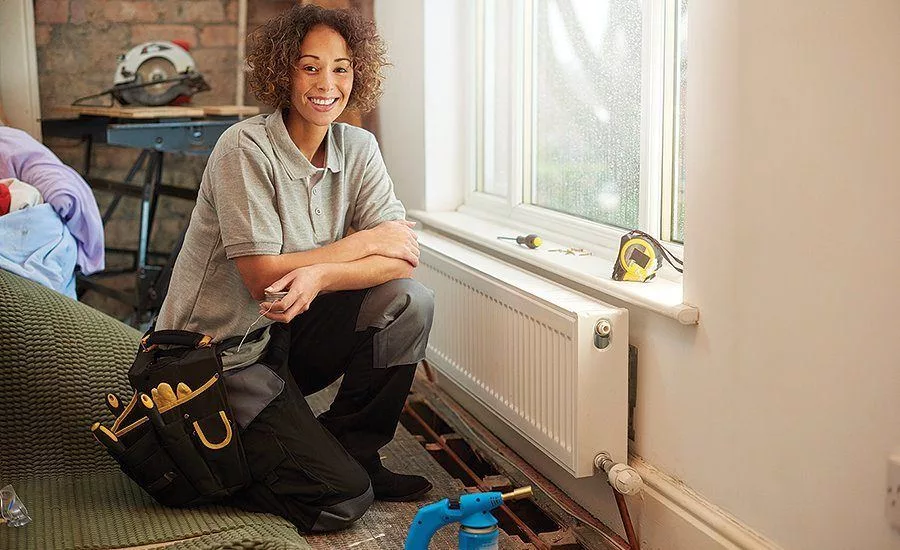Merry Beth Hall: Respecting and protecting tradeswomen

Since early October, more than 50 highly influential men have fallen from grace by public accusations of sexual harassment and misconduct, spawning a national movement drawing attention to the once verboten issue.
I have spent some time over the last couple months thinking about how the widespread accusations and their aftermath might affect the construction trades and what opportunities it presents for our industry.
In a 2013 study conducted by the Institute for Women’s Policy Research (IWPR) on women in construction, 31% of respondents indicated that they had been harassed. According to the report: “Sexual harassment ranged from inappropriate touching and unwanted and derogatory comments to intimidation in isolated areas. One woman feared for her life.”
Some respondents (14%) indicated that they tolerated the harassment for fear of retaliation, and another 2% left their jobs because of harassment. Here are some comments from the survey:
- “Harassment and discrimination are a normal part of my job.”
- “The rigger said, ‘I don’t want her, don’t you have anyone else?’”
- “Gender discrimination is rampant, constant, and considered normal in the industry.”
The IWPR study also identified a need for stronger enforcement of anti-discrimination laws and affirmative action rules in the construction industry. In this study, only 41% of women in construction felt that they were being treated equally to their male counterparts with regard to promotions. And just 57% of women felt they were being treated equally to men with regard to assignments.
“Examples of discrimination included being demoted or not promoted because men didn’t want to work for a woman, being assigned the hardest work, being last to get work and first to be laid off, being hit with cranes, and having tires flattened,” reads the report.
According to the U.S. Bureau of Labor Statistics (BLS) data for 2017, women make up 2.3% of the workforce in skilled construction trades (plumbing, HVAC and electrical) — a number that has not changed since the 2011 BLS data were released.
Rather than belabor the issue any further, let’s look at the opportunities this information presents to the construction trades and how we can use it to improve our industry to become a more desirable workplace.
HOW CAN EMPLOYERS MAKE A DIFFERENCE?
One of the most important things employers can do is support existing women in the workplace by addressing the most common issues they face. An excellent start is to train all staff to be more sensitive to avoiding comments that may be interpreted as belittling or harassing.
These comments, over time, create what is known as a hostile workplace and can be costly to an employer if not addressed. Training courses are available in many formats, and a simple online search will present many options.
Many women in construction also report that they feel isolated as the only female on a job site. Employers should be sure to pair women with other women when possible. When not possible, ensure that women are mentored by trustworthy colleagues and receive the same training and focused attention as their peers.
HEALTH AND SAFETY CONSIDERATIONS
Employers, please also remember there are some specific health and safety concerns in the construction industry that affect women and some men who are smaller in stature.
Personal protective equipment (PPE) that fits most men is often too large for many women. When clothing is too loose, it can get caught in machinery, and respirators that don’t fit well will not protect adequately against airborne hazards. PPE that fits women properly is now being manufactured and should be made available to ensure their safety.
Another issue that can be easily addressed is the lack of clean restroom facilities on job sites. OSHA requires clean toilets and hand washing facilities on every job site. Contractors, make sure your portable facilities are clean and have working locks on the doors, and that you have hand washing facilities available. This is a basic health need.
Finally, ensure that all workers, women and men, receive the same safety training. Help women and smaller men find tools in smaller sizes that fit their hand sizes better. And adapt lifting demands to fit upper body strength.
There are many simple things the construction trades can do to become equally respectful of women so that we can start attracting people into this fine industry. We have to take a hard look at some of our male-oriented traditions and realize that what we have always done is no longer acceptable.
Times have changed. It’s no longer acceptable to have a pin-up calendar on the wall in the back of the shop (yes, I saw that in 2017).
I’m going to leave you with two quotes from the 2013 IWPR Tradeswomen Survey that aims a brighter light on our industry:
- “If more women would put themselves out there and get into the construction trades, I think the opportunities are available.”
- “Let women know that there are women out there in nontraditional jobs. I did not know.”
With a few tweaks to what we are doing, I think we could see a big change toward these thoughts becoming more typical.
Looking for a reprint of this article?
From high-res PDFs to custom plaques, order your copy today!







